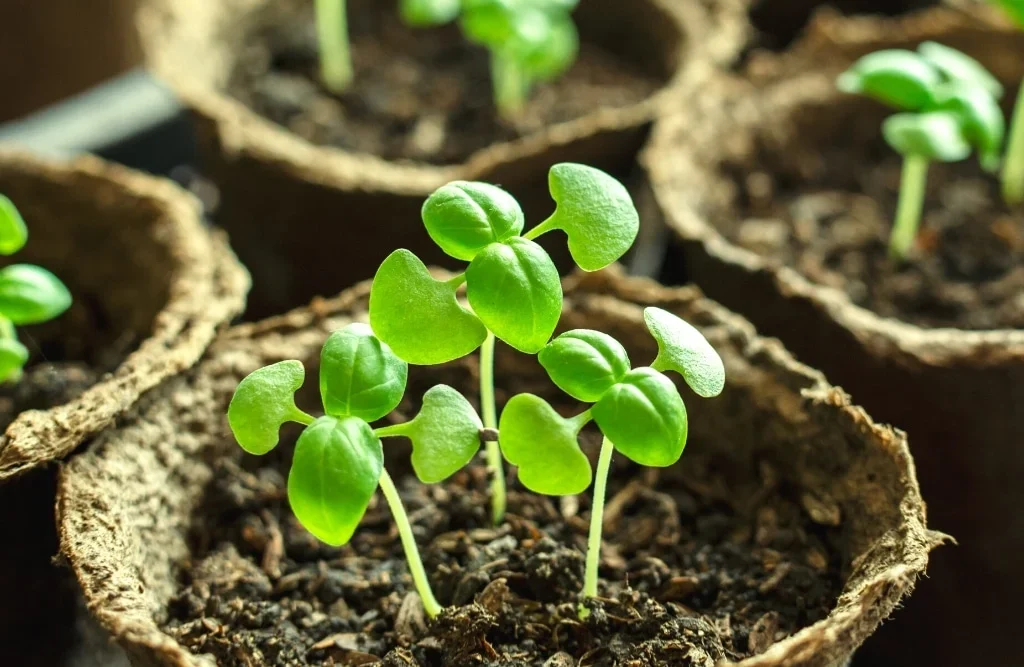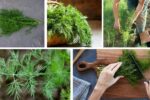Basil, often called the “king of herbs,” is a fragrant, versatile plant that finds its way into countless dishes—from pesto sauces and salads to soups, marinades, and refreshing teas. Its vibrant green leaves, paired with a distinctive aroma, make it one of the most beloved herbs in kitchens worldwide. While basil can be purchased as a mature plant from nurseries, growing it from seeds is both cost-effective and rewarding, especially for beginners eager to start their gardening journey. With just a little care and attention, you can transform a handful of basil seeds into thriving plants that provide fresh leaves all season long.
This guide will walk you step by step through the easiest beginner-friendly method for growing basil from seeds, ensuring healthy, abundant plants that you can enjoy indoors or outdoors.
Why Grow Basil from Seeds?

Starting basil from seeds offers several advantages:
- Cost-effective: A single packet of seeds costs less than buying a potted plant and produces multiple plants.
- Freshness: You’ll always have access to pesticide-free, fresh basil.
- Variety: Seed packets allow you to explore unique basil varieties like Thai basil, lemon basil, or purple basil, which may not be readily available at nurseries.
- Satisfaction: Watching seeds sprout into lush plants is an immensely fulfilling gardening experience.
Step 1: Choosing the Right Basil Seeds

Before you begin, consider what type of basil you’d like to grow.
- Sweet Basil: The most common variety, perfect for Italian dishes and pestos.
- Thai Basil: Spicy, licorice-like flavor, excellent for Asian recipes.
- Lemon Basil: Citrusy aroma, great for teas and desserts.
- Purple Basil: Adds a decorative touch and a slightly spicier taste.
For beginners, sweet basil is the easiest to grow and the most versatile for culinary use.
Step 2: Preparing Your Supplies
To start basil from seeds, you’ll need:
- Seed starting mix (light, well-draining soil with good aeration). Avoid garden soil, which is too heavy.
- Seed trays or small pots (with drainage holes).
- Clear plastic cover or plastic wrap (to create a greenhouse effect).
- Spray bottle (to gently water without disturbing seeds).
- Sunny windowsill or grow light (basil needs plenty of light).
Step 3: Sowing the Seeds

- Fill containers with the seed starting mix, leaving about ½ inch space at the top.
- Sprinkle seeds lightly on the soil surface. Basil seeds are tiny, so don’t overcrowd. Aim for 3–4 seeds per cell or pot.
- Cover seeds thinly with ¼ inch of soil or simply press them into the surface. Basil seeds need some light to germinate, so avoid burying them too deep.
- Mist with water using a spray bottle to moisten the soil evenly.
- Cover with plastic wrap or a clear lid to retain warmth and humidity.
Step 4: Germination

Basil seeds usually germinate in 5–10 days under the right conditions:
- Temperature: Ideal range is 70–75°F (21–24°C).
- Light: Place containers in a bright spot or under grow lights. Basil seedlings need at least 12–14 hours of light daily.
- Moisture: Keep the soil consistently moist but never soggy.
Once seedlings sprout, remove the plastic cover to prevent mold growth.
Step 5: Thinning and Transplanting Seedlings

When seedlings are about 2 inches tall and have their first set of true leaves (the second set of leaves after sprouting), thin them out:
- Snip weaker seedlings at soil level to allow stronger ones to thrive.
- Keep one healthy seedling per pot or cell.
If growing in trays, transplant seedlings into individual pots once they’re about 3–4 inches tall.
Step 6: Caring for Growing Basil Plants
To ensure your basil plants grow strong and healthy, follow these care tips:
1. Light
- Basil requires 6–8 hours of direct sunlight daily.
- If indoors, use a grow light to supplement natural light.
2. Watering
- Keep the soil evenly moist, but avoid waterlogging.
- Water when the top inch of soil feels dry.
- Water at the base to prevent fungal issues on leaves.
3. Soil & Fertilizer
- Use a well-draining, nutrient-rich soil.
- Fertilize lightly every 3–4 weeks with a balanced, organic liquid fertilizer. Too much nitrogen can cause lush leaves but reduce flavor.
4. Temperature & Humidity
- Basil thrives in warm temperatures. Protect it from cold drafts if grown indoors.
- Outdoor basil is sensitive to frost, so wait until all danger of frost has passed before planting outside.
Step 7: Pinching and Pruning for More Growth
One of the secrets to abundant basil is regular pruning:
- When the plant has 6–8 leaves, pinch off the top two leaves. This encourages side branches, making the plant bushier.
- Continue pinching regularly to prevent basil from becoming tall and leggy.
- Always pinch flower buds as soon as they appear. If basil flowers, the leaves can turn bitter and growth slows.
Step 8: Harvesting Basil
- Begin harvesting once the plant is about 6–8 inches tall.
- Use clean scissors or pinch off leaves from the top, leaving at least two sets of leaves at the bottom so the plant keeps growing.
- Harvest regularly to stimulate new leaf growth.
A well-cared-for basil plant can provide fresh leaves continuously for months.
Step 9: Extending Basil’s Life Cycle
Basil is typically an annual herb, meaning it completes its life cycle in one season. However, you can extend its usefulness by:
- Propagating cuttings: Place cut basil stems in water until roots develop, then transplant them into soil.
- Indoor growing: In cooler months, keep basil indoors under grow lights to enjoy it year-round.
Common Problems and Solutions
- Leggy Seedlings – Caused by insufficient light. Solution: Move closer to a light source or use grow lights.
- Yellow Leaves – Overwatering or poor drainage. Solution: Water less frequently and ensure pots have drainage holes.
- Fungal Diseases – Often from damp conditions. Solution: Water at soil level, provide good airflow, and avoid overcrowding.
- Aphids or Whiteflies – Insect pests can appear indoors. Solution: Spray with neem oil or insecticidal soap.
Creative Uses for Fresh Basil
Once you have a thriving basil plant, there are endless ways to enjoy your harvest:
- Make classic pesto sauce with basil, garlic, olive oil, and pine nuts.
- Add fresh leaves to pizzas, pastas, and salads.
- Infuse basil into herbal teas or lemonade.
- Use as a garnish for soups, cocktails, or even desserts.
- Dry or freeze leaves for long-term storage.
Final Thoughts
Growing basil from seeds may sound daunting for beginners, but with the right method, it’s one of the simplest and most rewarding gardening projects. From sowing tiny seeds to harvesting fragrant leaves, every step is an opportunity to connect with nature and enjoy fresh, homegrown flavor in your meals. With proper light, warmth, pruning, and care, your basil plants will thrive—whether on a sunny windowsill, balcony, or backyard garden.
So, grab a packet of basil seeds, a pot, and some soil, and begin your journey toward a season full of fresh, aromatic basil right at home.




Leave A Comment